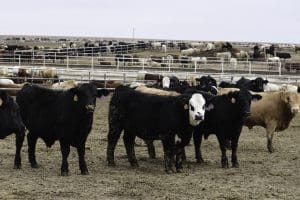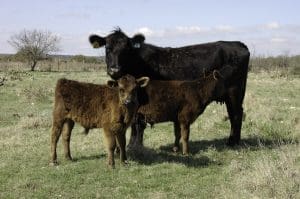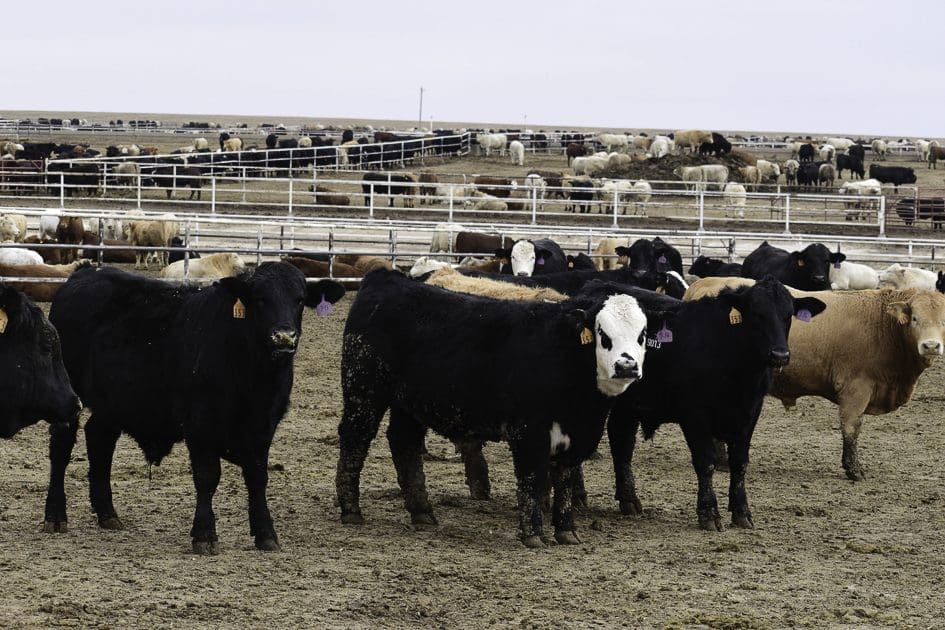By Larry Stalcup Contributing Editor

If you liked 2023 cattle prices, 2024’s should please you even more. Depending on the quality of cattle being sold and risk management coverage, there is even stronger profit potential for calves, feeders and fed cattle marketed next year.
With high demand for beef that’s in short supply, producers and feeders should be rewarded with higher prices in 2024, says David Anderson, Texas A&M University AgriLife Extension economist. He is among most livestock marketing economists who see continued high prices next year.
“With what we’re seeing, prices are expected to be higher for the next couple of years,” Anderson projects, taking into account low cattle numbers and an ever-growing domestic and export demand for high-quality beef.
Anderson notes that in late August, USDA’s Livestock Marketing Information Center (LMIC) showed medium- to large-frame No. 1 500- to 600-pound steers averaged more than $280 per cwt. That compared to more than $200 the same period in 2022.
For medium- and large-frame No. 1 700- to 800-pound feeder steers, the late August market showed prices at about $250 per cwt., having backed off from nearly $260 a few weeks earlier. That’s compared to about $180 the same period in 2022.
Fed steers finished at prices that averaged just under $180 per cwt. By mid-September, they were pushing $185. The combination of continued demand and tight cattle supplies were the main reasons prices were about $40 per cwt. higher than the same period in 2022.
If Anderson’s projections are any indication, look for the uptrend to continue. Here are his 2024 quarterly projections for 500- to 600-pound calves:
• 1st quarter: $265-$272 per cwt.
• 2nd quarter: $270-$275
• 3rd quarter: $282-$292
• 4th quarter: $292-$308
Anderson’s quarterly projections for 700- to 800-pound feeders take a similar path upward:
• 1st quarter: $253-$258 per cwt.
• 2nd quarter: $263-$268
• 3rd quarter: $275-$285
• 4th quarter: $282-$292
Anderson’s fed cattle projections have 1,100- to 1,300-pound fats surging to more than $200 in late 2024:
• 1st quarter: $185-$189 per cwt.
• 2nd quarter: $193-$198
• 3rd quarter: $191-$195
• 4th quarter: $203-$208
Tight Supplies to Continue
Tight supplies are helping keep prices higher, and Anderson sees no quick relief for herd rebuilding.
“Higher supplies and higher demand ought to suggest higher prices. And higher prices are a market signal to start rebuilding the herd,” he says. “The speed of rebuilding is the key. Continued drought in parts of Texas, Oklahoma, Kansas and Nebraska will dictate our ability to expand the cow herd.”
Replacement heifers are expected to decrease by 2.4 percent in 2024 to just more than 4 million head, according to LMIC projections. “We need to increase replacements to grow the herd,” Anderson says. “Fewer heifers were held back for replacements this year than in 2022, and that number is going even lower.
“But there are still mixed signals on rebuilding. Along with reduced placements, fewer beef cows are being culled. Maybe that will help rebuild the herd.”
He adds that beef production is down from a record year in 2022. “This is a trend that will continue the next couple of years,” he predicts. “For 2023, we’re down 5.5 percent from 2022, then it’s projected to be down another 6 percent for 2024. We have fewer cows, fewer calves and fewer cattle in feedlots.”
Thankfully, he points out that beef production per animal has increased substantially due to better genetics and production capabilities, or numbers would be lower.
Anderson says high feed costs have come down and could ease a little more heading into next year. Southern corn cash prices have been more than $6.50 per bushel nearly all year, and topped $7 and even $7.50 through much of April and in a spike in June.
However, Corn Belt rains helped drop corn prices to below $6, $1.50 a bushel or lower than a year ago. “We can expect corn prices to go even lower in 2024,” Anderson says, due to increased corn stocks following this year’s harvest. “Even with a dry Midwest, a large corn crop is projected.”
Near $450 per Head Profit for Cow-Calf Operators
Anderson sees a third straight year of profits for cow-calf producers after four out of five years of losses. And profits could be huge. “Estimates by the USDA and LMIC project an average return for 2024 of more than $450 per head,” he says, compared to $175-plus per head profit this year and just under $50 in 2022.”
High profits should carry over to stocker operators, but cattle feeders could see margins pressured due to higher feeder cattle costs. Anderson adds that packers, which capitalized on their supply and demand advantages and massive profits during the pandemic, will likely continue to see tighter margins due to tighter cattle supplies.

What Is the Price Limit for Consumers?
“We’re going to test high prices paid by consumers,” Anderson says. “Even if they have money in their pocket, there’s a point to where consumers will look at the cost of that ribeye and say ‘I refuse to pay that.’”
He points out that Bureau of Labor statistics indicate from 2017 through 2021, the average retail price for Choice beef ranged from just less than $6 per pound to about $6.50. In 2022, it stayed in the neighborhood of $7.50 to $7.70. For 2023, it surged to more than $8.30 by mid-summer.
“Even though we’re going to test demand, there are indications that U.S. high-quality beef will continue to be in demand,” Anderson says.
Of course, other than contracts already in place, nothing can be chiseled in stone when it comes to future cattle prices. Too many things can happen that can impact markets. Anderson emphasizes the need for producers to consider using price risk management.
He suggests that Livestock Risk Protection (LRP) programs provide tools that are similar to cattle futures and futures options to help manage markets.
“LRP offers a real opportunity to lock in these profitable prices and take away downside risks,” he says.







